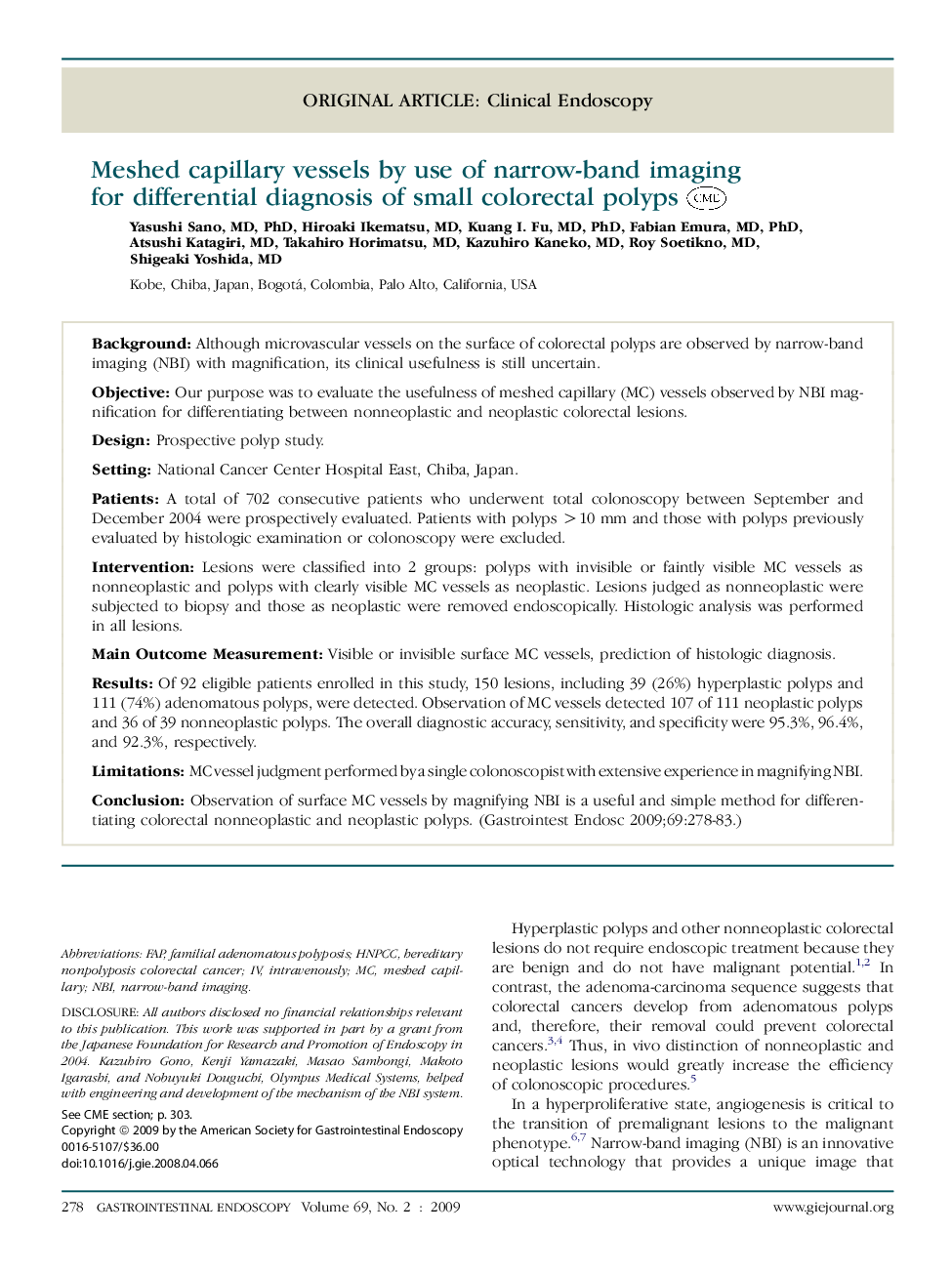| Article ID | Journal | Published Year | Pages | File Type |
|---|---|---|---|---|
| 3308516 | Gastrointestinal Endoscopy | 2009 | 6 Pages |
BackgroundAlthough microvascular vessels on the surface of colorectal polyps are observed by narrow-band imaging (NBI) with magnification, its clinical usefulness is still uncertain.ObjectiveOur purpose was to evaluate the usefulness of meshed capillary (MC) vessels observed by NBI magnification for differentiating between nonneoplastic and neoplastic colorectal lesions.DesignProspective polyp study.SettingNational Cancer Center Hospital East, Chiba, Japan.PatientsA total of 702 consecutive patients who underwent total colonoscopy between September and December 2004 were prospectively evaluated. Patients with polyps >10 mm and those with polyps previously evaluated by histologic examination or colonoscopy were excluded.InterventionLesions were classified into 2 groups: polyps with invisible or faintly visible MC vessels as nonneoplastic and polyps with clearly visible MC vessels as neoplastic. Lesions judged as nonneoplastic were subjected to biopsy and those as neoplastic were removed endoscopically. Histologic analysis was performed in all lesions.Main Outcome MeasurementVisible or invisible surface MC vessels, prediction of histologic diagnosis.ResultsOf 92 eligible patients enrolled in this study, 150 lesions, including 39 (26%) hyperplastic polyps and 111 (74%) adenomatous polyps, were detected. Observation of MC vessels detected 107 of 111 neoplastic polyps and 36 of 39 nonneoplastic polyps. The overall diagnostic accuracy, sensitivity, and specificity were 95.3%, 96.4%, and 92.3%, respectively.LimitationsMC vessel judgment performed by a single colonoscopist with extensive experience in magnifying NBI.ConclusionObservation of surface MC vessels by magnifying NBI is a useful and simple method for differentiating colorectal nonneoplastic and neoplastic polyps.
